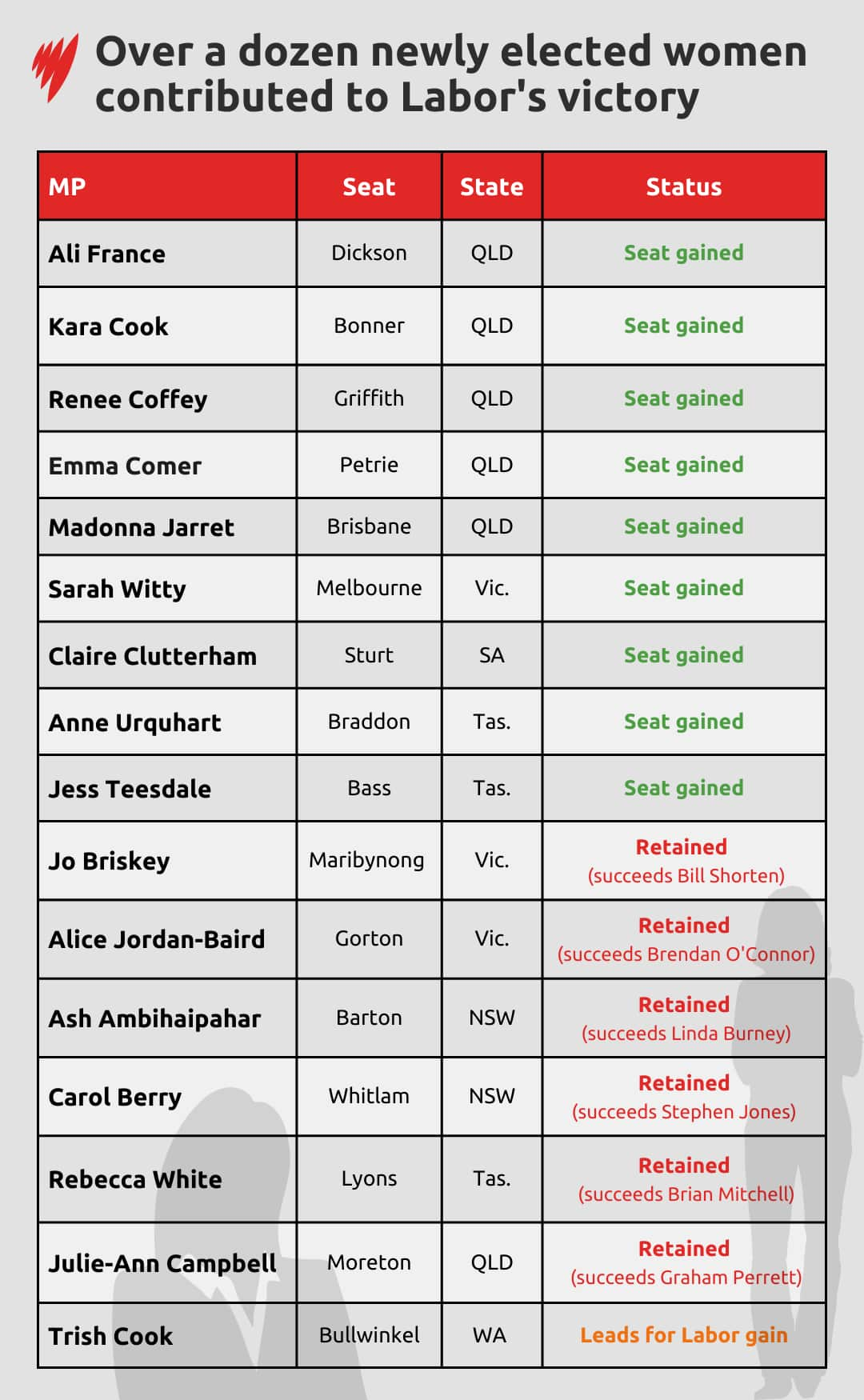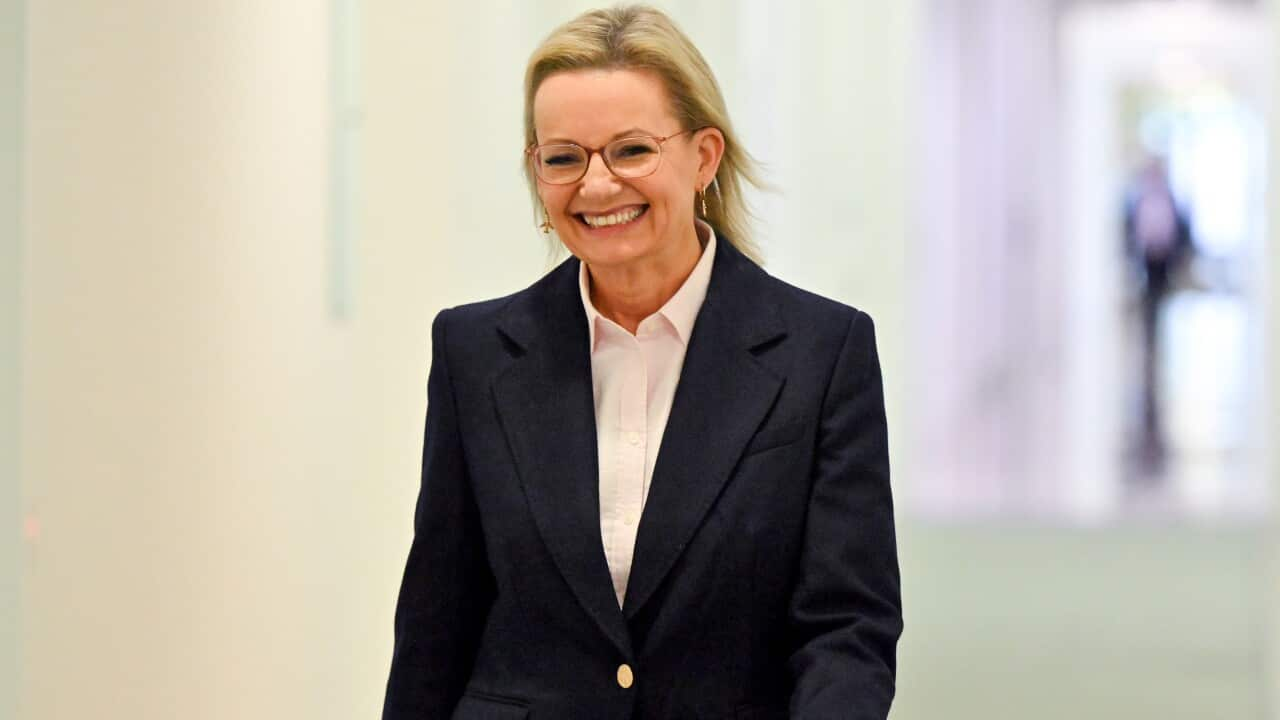Sussan Ley has been elected to lead the Liberals — the first woman to hold the federal party's top job in its 80-year history.
29-25, with the climate change spokesperson Ted O'Brien elected as the party's deputy leader following the Coalition's loss at the 3 May federal election.
Liberal senator Jane Hume hailed the result a "new era" for the party, while her upper house colleague Jason Wood said: "Great for the Liberal party, first female leader".
But as Ley's win is celebrated, others have said more needs to be done to boost women's representation in the party.
"I want to [say] right here right now, we need more women in our party. We need more women in our organisation and we need more women in this party room," Ley said in her first speech as leader, while stopping short of backing formal gender quotas.
It comes as Labor women will outnumber men in the lower house for the first time. Women are expected to hold 51 of the 93 seats polling firm Redbridge predicts Labor will secure. Fifteen of these are newly elected female MPs.
There were several surprising wins, including in Dickson and .
New faces in parliament include ; Jo Briskey, who succeeds former NDIS minister Bill Shorten in Melbourne's Maribyrnong; and Ash Ambihaipahar, who takes over the Sydney seat of Barton from former Indigenous Australians minister Linda Burney, who has retired.

A record-breaking number of women have been elected to Australia's parliament, with a major share coming from Labor's ranks in the House of Representatives. Source: SBS News
"The thing about gender equality in the Labor Party is everyone in the caucus is for gender equality. That conversation or that argument has been won," Gallagher said last week.
The Coalition elected at least nine women MPs — seven from the Liberal Party and two from the Nationals — out of 42 in the lower house — the same figure as in the 2022 federal election. That could increase to 10 if incumbent Liberal MP Zoe McKenzie wins the Victorian seat of Flinders.
Catherine Hunter, CEO of the Diversity Council of Australia, told SBS News last week the 2025 election marked a major milestone for gender diversity in parliament, with diversity more broadly "essential for a healthy democracy".
"When people making decisions reflect the diversity of the Australian community, the policies they create are more likely to be more inclusive, more effective, and ultimately, fairer," she said.
She said lived experience is critical to making decisions, otherwise leaders risk "overlooking or misunderstanding the realities facing huge sections of the population".
As vote counting continues, there will be at least 68 women in the House of Representatives — an increase from the 58 elected in 2022 and 40 in 2019.
So, how does Australia compare to the rest of the world?
Coalition faces quota pressures
On Monday, before Liberals voted for their new leader, Charlotte Mortlock — a former journalist and Liberal staffer who founded the Hilma's Network, which supports women for Liberal Party pre-selection — launched a petition calling on the party to establish gender quotas.
"Women in the Party and across the country more broadly have been demanding the Liberal Party improves its female representation for decades," Mortlock wrote. "We have failed to act."
Former Liberal frontbencher Simon Birmingham last week argued the Coalition should consider "hard, fast and ambitious" quotas for women in parliament, with representation so low.
"I struggle to think of any alternatives if there's to be a new direction that truly demonstrates change and truly guarantees that the party will better reflect the composition of modern society," he said in a post on LinkedIn.
Former Liberal NSW premier Barry O'Farrell said it is important that political parties reflect the community they represent, with more diversity both culturally and in terms of gender.
Pressed on women quotas specifically, he told SBS News the Liberals "need to increase its diversity in all areas".

A record number of women will represent Australians in the federal parliament, a considerable uptick from the 58 women who were elected to the 47th parliament. Source: SBS News
She told SBS News that alongside quotas, the Coalition needs to consider where it's placing its women candidates, avoiding the glass cliff.
The glass cliff refers to women being given leadership opportunities during difficult times or times of crises, but in a political context, can refer to being placed in more difficult contests.
"We did an analysis last election and what we saw is that women are more likely than men to be placed in risky and precarious seats, so ones that are basically either unwinnable or difficult to win or hold," she said.
"They do differ by party as well. For the Coalition, women were much more likely to be in those unwinnable seats."

Source: SBS News
In an opinion piece for the Australian Financial Review on Friday, political commentator Freya Leach said quotas "diminish the very people they claim to elevate."
"I want great Liberal women to be recognised based on their merit and effort, not because of their luck to be born a woman," Leach, who is also the director of the Centre for Youth Policy at the Menzies Research Centre, wrote.
Leach argued that women were not turning away from the Liberals because of the lack of quotas, but rather because the party was "not talking about what matters to them."
"Housing is out of reach, fertility is falling, the cost of living is crushing. For many women, the dream of building a future feels increasingly impossible, and we’ve had little to say beyond recycled slogans and Labor-lite platitudes," she wrote.
How does Australia compare to the rest of the world?
Australia does "pretty well relative to its comparators", according to Ryan.
She said Scandinavian countries such as Finland, which has had three women prime ministers, and Switzerland, which has had five women presidents, often lead perceptions around gender diversity.
However, parliaments like Rwanda, which in 2024 had 50 per cent representation, often surprise the public.
"So that's partly due to quotas. It's partly to do with genocide, where many men were killed. So the reasons for representation are often different," she said.
She said this includes the rise of women to head of state due to marriage or being the daughter of a previous prime minister.
Other countries with at least half of their parliament or lower house made up of women include Cuba, Nicaragua, Andorra, Mexico and the United Arab Emirates, according to UN Women.
UN Women calculates that globally, only 27.2 per cent of parliamentarians in single or lower houses are women, with monarchy-based systems excluded from the count.
Despite a mammoth election year globally in 2024, 107 countries have yet to have a woman as the head of state.


